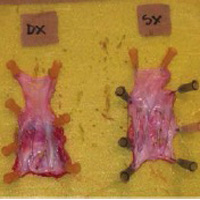What are the ideal characteristics of a venous stent?

Accepted: 15 June 2021
HTML: 164
All claims expressed in this article are solely those of the authors and do not necessarily represent those of their affiliated organizations, or those of the publisher, the editors and the reviewers. Any product that may be evaluated in this article or claim that may be made by its manufacturer is not guaranteed or endorsed by the publisher.
Authors
Historically, the stents used in the venous system were not dedicated scaffolds. They were largely adapted arterial stents. An essential feature of a venous stent is compliance, in order to adapt its crosssectional area to the vein. It should also be crush resistant, corrosion resistant and fatigue resistant. The material should be radiopaque, for follow-up. Another characteristic of the ideal venous stent is flexibility, to adapt its shape to the vein, not vice versa. The scaffold should be uncovered too, in order to avoid the occlusion of collaterals. The ideal venous stent should not migrate, so it is necessary a large diameter and a long length. The radial force is important to prevent migration. However, current stents derived from arterial use display high radial force, which could affect the patency of the thin venous wall. Alternatively, if the stent has an anchor point, that permits a passive anchoring, the radial force required to avoid migration will be lower. Dedicated venous stents were not available until very recently. Furthermore, there is a preclinical study about a new compliant nitinol stent, denominated Petalo CVS. Out of the commonest causes of large veins obstruction, dedicated venous stent could also treat other diseases described more recently, such as the jugular variant of the Eagle syndrome, JEDI syndrome and jugular lesions of the chronic cerebrospinal venous insufficiency that result unfavorable for angioplasty according to Giaquinta classification.
How to Cite

This work is licensed under a Creative Commons Attribution-NonCommercial 4.0 International License.
PAGEPress has chosen to apply the Creative Commons Attribution NonCommercial 4.0 International License (CC BY-NC 4.0) to all manuscripts to be published.

 https://doi.org/10.4081/vl.2021.9739
https://doi.org/10.4081/vl.2021.9739





